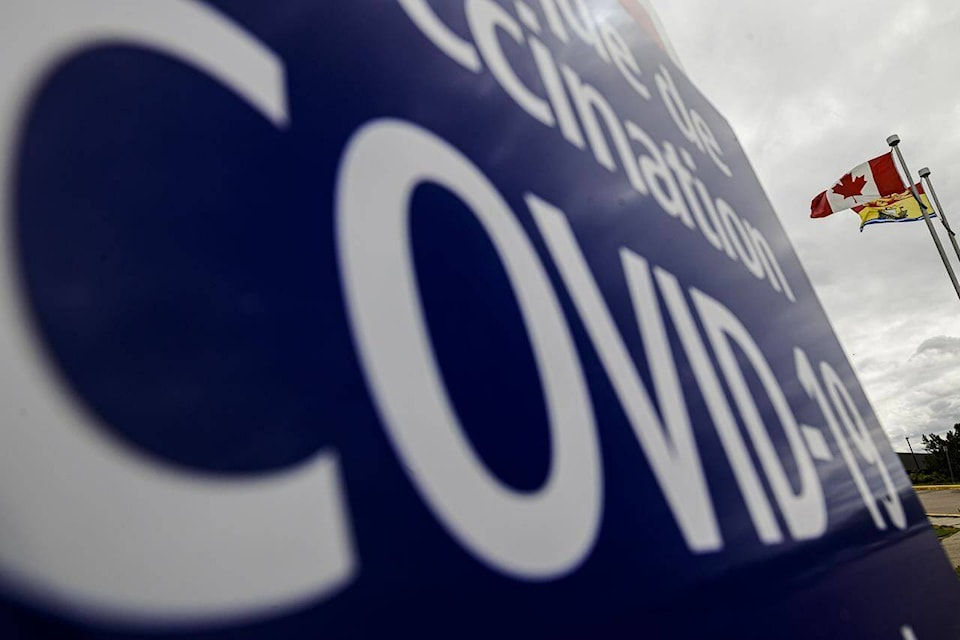New Brunswick announced tougher public health measures Thursday as COVID-19 hospitalizations continued to climb in several provinces and the Omicron variant fuelled more infections across Canada.
Meanwhile, Quebec announced it will remove its curfew Monday as researchers said the province might be over the worst of this wave. Nunavut said it was ready to lift its lockdown measures as case counts dropped in the territory.
Nunavut’s chief public health officer, Dr. Michael Patterson, said strict measures implemented just before Christmas have helped to control the spread of COVID-19 that fanned across the territory like never before.
On Monday, travel restrictions are to end in Nunavut and businesses will be allowed to reopen. Schools have also been given the green light to resume in-person learning on Jan. 24.
New Brunswick Premier Blaine Higgs said new measures will come into effect there Friday. Residents will be limited to a single-household bubble and gyms, entertainment venues and indoor dining at restaurants must close.
Higgs said the lockdown measures are a last resort, but necessary to protect the health-care system.
Neighbouring Prince Edward Island also announced it is extending measures as its top doctor said the “worst of this wave” is yet to come.
Dr. Heather Morrison, chief medical officer of health, told a news conference in Charlottetown that it will likely be another two weeks until cases peak in the province, but said it’s unclear how bad it will get.
P.E.I.’s current measures include a limit on personal gatherings to 10 people and capacity restrictions on businesses, including gyms, retail and places of worship. Remote learning for schoolchildren will also continue.
In Newfoundland and Labrador, a final decision on whether to resume in-person learning is yet to be made. Officials said a safe return date will be announced next Wednesday.
Quebec’s public health institute said Montreal may have reached its peak for this wave of COVID-19.
The Institut national de santé publique du Québec said in a report that half of its simulations showed new cases have come to a head and hospitalizations will peak by Monday. The other half suggest the climax could be reached in the coming days or weeks.
“Given the very high community transmission, the situation remains fragile even if a slowdown in the increase in the number of cases and hospitalizations may occur in the near future,” said Marc Brisson from Université Laval, where the projections were produced.
Premier François Legault announced Thursday that Quebec’s provincewide curfew – the only one introduced in the country – will end on Monday.
The measure has been criticized by social agencies who said it further marginalized women facing violence, young people and low-income residents. The government said it was put in place to reduce COVID-19 transmission.
Quebec reported a rise of 117 COVID-19-related hospitalizations, bringing its total to nearly 3,000.
Ontario, too, recorded a jump in hospitalizations of 182 to an all-time high of 3,630. School boards are calling on the province to reinstate COVID-19 reporting and tracking when schools reopen next week, to support families and children already dealing with lots of uncertainty.
A school board in Delta, B.C., is requiring its employees to show proof of COVID-19 vaccination to protect staff and students.
Staff who are not inoculated will have to undergo regular rapid testing or take an unpaid leave of absence.
In Saskatchewan, Premier Scott Moe tested positive for the virus after taking a rapid antigen test. He was self-isolating and said he will work from home for the next five days.
Alberta Premier Jason Kenney said case rates continue to climb to new records. About 6,000 new cases were reported Thursday, bringing the active case count to near 63,000.
Dr. Deena Hinshaw, Alberta’s chief medical officer of health, said about two in five people are testing positive for the virus. With limited testing available to the public, provincial data only shows a fraction of actual COVID-19 spread.
“Not having access to the same level of detail and data can feel disorienting. Not having access to testing for mild symptoms can be frustrating,” said Hinshaw.
She added Albertans do “still have the power” to protect themselves and their communities by following public health measures and being cautious.
As the virus travels across Canada, Indigenous federal inmates are being infected at disproportionately high rates. About 19 per cent of the 207 inmates infected in federalpenitentiariesidentify as Indigenous.
Indigenous Peoples make up five per cent of Canada’s population but accounted for just under one-third of the country’s federal prison population as of January 2020.
This report by The Canadian Press was first published Jan. 13, 2022.
Alanna Smith, The Canadian Press
